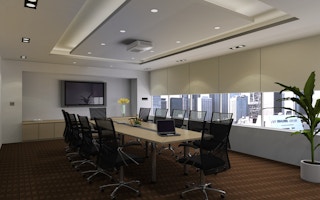Before dimmers were invented, the concept of light and darkness was as simple as “on” and “off”. There was no in-between and one either had light or they did not. The creation of early dimmers in the late 1890s blurred that line between “on” and “off”, but adoption of that technology was limited primarily due to their high cost.
It was not until the invention of the modern dimmer that a whole universe of practical applications for lighting was born. Up until the 1950s, lighting control was a complicated and expensive affair. Dimming was carried out primarily by using rheostat dimmers, which could only dim lights by transforming part of electricity into heat.
The bulky rheostat did not have any energy-saving features and instead consumed a lot of electricity and generated too much heat. Dimming via rheostat was simply too inconvenient for the masses, but one person was determined to challenge the status quo.
A Eureka moment for the lighting industry
The bright-eyed physicist Joel Spira invented the modern dimmer, also known as the solid-state dimmer, in a makeshift lab in New York in 1959. His invention could replace the light switch in a standard residential wallbox, making it easy for the average person to install.
The modern dimmer became an instant hit in the U.S. market and Joel would later found Lutron as well as improve his products with energy-saving features.
Joel passed away in April 2015, but his legacy lives on. Today, the dimmer as we all know it has become instrumental in creating ambiance and is helping designers and architects create the perfect setting for any occasion.
Apart from aesthetics, smart lighting control technology such as dimmers and automated shades is also helping to reduce our carbon footprint, while benefiting both home and office owners. The two main benefits of implementing a lighting control system are cost savings from reduced energy consumption and increased productivity.
Lower energy usage, higher cost savings
In any residential or commercial space, the cost of lighting can be reduced by up to 40 per cent and the lifespan of a lightbulb extended by 20 times if the lights are dimmed by 50 per cent.
For commercial spaces, the savings from intelligent lighting technology can be realised on a bigger scale since lighting in a commercial building contributes to about 38 per cent of total energy consumption.
Daylight harvesting – the automatic adjustment of lights when sufficient daylight is present – allows an office to save up to 60 per cent on energy costs.
Occupancy or vacancy sensing features that dim the lights, or turns them on or off whenever occupants are in a space can also be deployed to save energy from up to 20 to 60 percent.
“
The two main benefits of implementing a lighting control system are cost savings from reduced energy consumption and increased productivity.
Better lighting, more effective workspace
Additionally, adjustable lighting can create a more conducive work environment, which in turn can boost operational efficiency. In general, the majority of commercial spaces can be too bright for those present and that can hinder productivity.
More often than not, manual shades instead of motorised shades are installed, and these are seldom adjusted to fully use available daylight and minimise sun glare.
In a modern office environment, employees have to juggle between being efficient in both paperwork and computer work. However, even though typical lighting is adequate for paperwork, it is two to three times brighter than the ideal amount for doing work on the computer.
Last but not least, having the ability to control the lighting in conference room areas or individual workspaces allows for maximum versatility to suit the needs of each employee.
In memory of Joel Spira
Early dimmers had a muted impact on how man used artificial lighting due to their physical and technical limitations. But the modern dimmer, invented by Joel Spira, has brought about a sea change in how contemporary spaces are lit.
They can now use lighting control devices to save energy, increase comfort levels and efficiency levels. This article is written in the hopes that you think of Joel and his contributions every time you see light, or a lack thereof.
Boon Liang Seng is director, Southeast Asia, Lutron Electronics. This article was written exclusively for Eco-Business.









